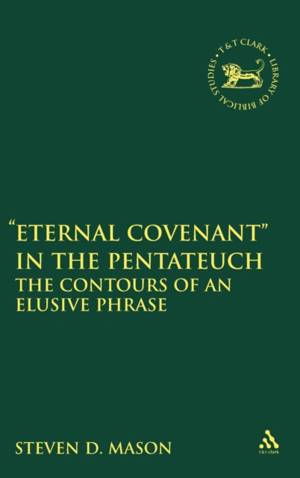
- Afhalen na 1 uur in een winkel met voorraad
- Gratis thuislevering in België vanaf € 30
- Ruim aanbod met 7 miljoen producten
- Afhalen na 1 uur in een winkel met voorraad
- Gratis thuislevering in België vanaf € 30
- Ruim aanbod met 7 miljoen producten
Zoeken
€ 373,45
+ 746 punten
Omschrijving
A perusal of Old Testament covenant studies shows that Berit Olam lacks significant scholarly attention. This is surprising since even a quick glance at the eighteen instances shows that though the phrase occurs relatively infrequently it resides within very important passages in the Old Testament, and is connected to some of the most prominent figures of the Old Testament story. Moreover, when Berit Olam is addressed in scholarship it is generally conceived as an unbreakable, unilateral promise. But is this an accurate assessment of Berit Olam? What is an eternal covenant? How does an eternal covenant work? What are the relationships between the respective eternal covenants? What ideas of the text are we referring to when talk about an eternal covenant?
This book answers these sorts of questions involving eternal covenant in the Bible by beginning with an exegetical study of Berit Olam in the Pentateuch. While word studies on Olam and Berit do exist, this study is interested in identifying the ideas and themes associated with each instance of the phrase within the final-form of the text in order to understand its meaning and significance. By addressing each instance in canonical order (Genesis 9, 17; Exodus 31; Leviticus 24; Numbers 18, 25), the study reveals that Berit Olam actually represents a bilateral and conditional arrangement that reflects certain common themes as it is used within distinct passages. The study serves as a starting point for grasping the contours of this elusive phrase within the Old Testament.
This book answers these sorts of questions involving eternal covenant in the Bible by beginning with an exegetical study of Berit Olam in the Pentateuch. While word studies on Olam and Berit do exist, this study is interested in identifying the ideas and themes associated with each instance of the phrase within the final-form of the text in order to understand its meaning and significance. By addressing each instance in canonical order (Genesis 9, 17; Exodus 31; Leviticus 24; Numbers 18, 25), the study reveals that Berit Olam actually represents a bilateral and conditional arrangement that reflects certain common themes as it is used within distinct passages. The study serves as a starting point for grasping the contours of this elusive phrase within the Old Testament.
Specificaties
Betrokkenen
- Auteur(s):
- Uitgeverij:
Inhoud
- Aantal bladzijden:
- 272
- Taal:
- Engels
- Reeks:
Eigenschappen
- Productcode (EAN):
- 9780567027184
- Verschijningsdatum:
- 1/08/2008
- Uitvoering:
- Hardcover
- Formaat:
- Genaaid
- Afmetingen:
- 157 mm x 236 mm
- Gewicht:
- 521 g

Alleen bij Standaard Boekhandel
+ 746 punten op je klantenkaart van Standaard Boekhandel
Beoordelingen
We publiceren alleen reviews die voldoen aan de voorwaarden voor reviews. Bekijk onze voorwaarden voor reviews.








